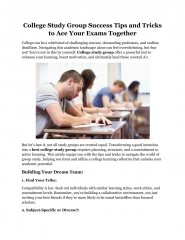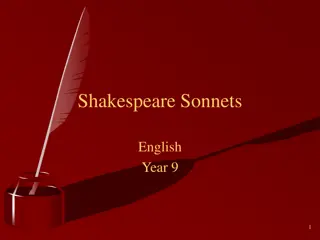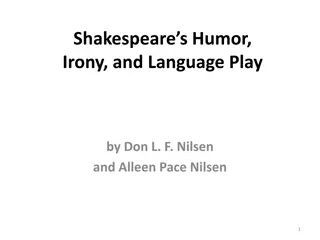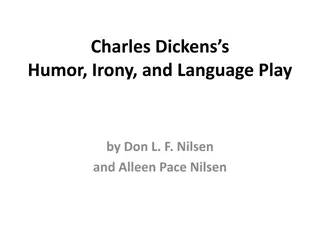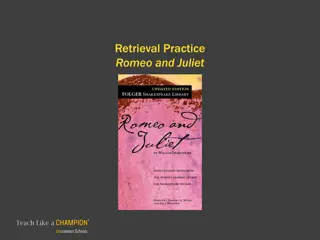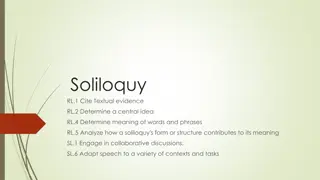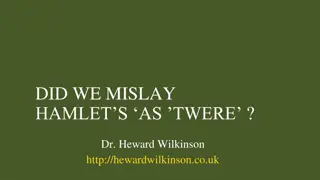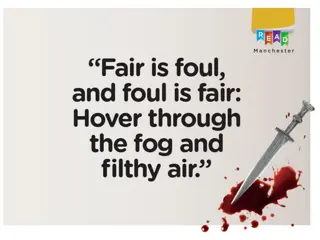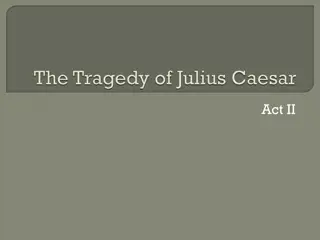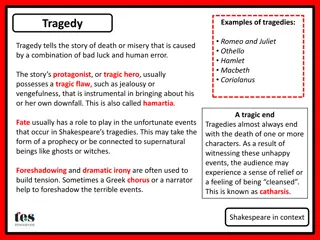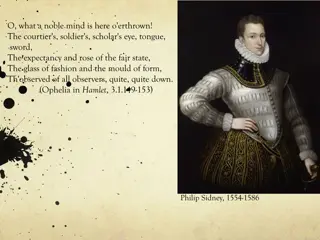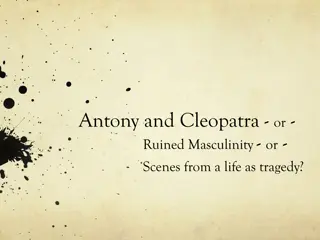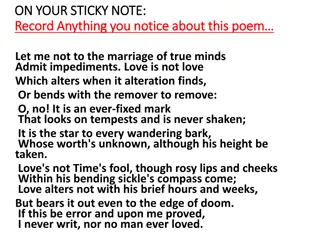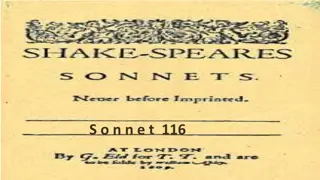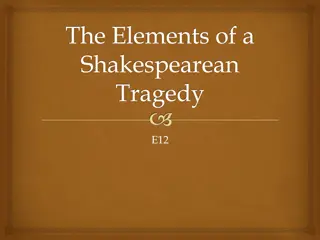A Comprehensive Guide to Shakespearean Comedies: Tricks and Targets
Explore the world of Shakespearean comedies, delving into their definition, common characteristics, clowns and fools, societal reflections, and the thematic focus on marriage. Discover how these plays balance humor with dark themes, intricate plotlines, mistaken identities, and the role of witty fools. Dive into the societal context of Elizabethan comedy, where laughter served as a coping mechanism for uncomfortable truths. Unpack the complexities of marriage in Shakespeare's works, where it emerges as a source of both anxiety and desire for characters.
Download Presentation

Please find below an Image/Link to download the presentation.
The content on the website is provided AS IS for your information and personal use only. It may not be sold, licensed, or shared on other websites without obtaining consent from the author. Download presentation by click this link. If you encounter any issues during the download, it is possible that the publisher has removed the file from their server.
E N D
Presentation Transcript
SHAKESPEARES COMEDIES TRICKS AND TARGETS
DEFINITION: REVIEW DEFINITION: REVIEW A play of Shakespeare s time was called a comedy if it had a happy ending, and generally that meant a marriage. Shakespearean comedy is not all about laughs, although it can be unbearably funny. It may also involve some very dark or violent storylines.
COMMON CHARACTERISTICS COMMON CHARACTERISTICS A struggle of young lovers to overcome problems, often the result of the interference of their elders There is some element of separation and reunification Mistaken identities, often involving disguise usually a marker for farce A clever servant (fool) Family conflicts that are usually resolved in the end Complex, interwoven plot-lines
CLOWNS AND FOOLS CLOWNS AND FOOLS A Shakspearean fool usually is named fool and has the job of providing witty commentary that brings the powerful down a peg and also gets money out of them. They break boundaries of rank, have complete liberty of speech. Feste in Twelfth Night works for Olivia as a fool, and entertains all with his explanations about why things are really the opposite of what they appear. (3:1) Clowns are everywhere (ain t it the truth). Any character can play a clown part if he/she does idiotic things with little to no self-awareness. Sir Andrew Aguecheek, Sir Toby Belch Bottom is a clown in Midsummer Night s Dream
FOOLS FOOLS VS VS CLOWNS CLOWNS
COMEDY AND ELIZABETHAN SOCIETY COMEDY AND ELIZABETHAN SOCIETY Comedy is serious business, and does important work in a culture Laughter is a way of coping with something uncomfortable. People never laugh at anything that s simply nice . Example: adultery is categorically, hysterically funny in Shakespeare s time why? In a culture where legitimate offspring are essential and control of women s bodies is like a religion, everyone s screwing around. Laughter recognizes the difference between what things are, and what they ought to be ; The . . . laughable then is the incongruous, the disconnecting one idea from another, or the jostling of one [contrasting] feeling against another. (William Hazlitt) We laugh at the disconcerting sight of a person losing the elasticity of humanity, becoming a mechanism, a thing, something mechanical encrusted on the the living. (Henri Bergson) Think of Malvolio, who has no relationship to others except through his social ambition.
MARRIAGE MARRIAGE WHY SUCH A FOCUS? WHY SUCH A FOCUS? Marriage = a source of intense anxiety and desire; it s both comforting and oppressive Characters want marriage, and fear it; they need to find their parents, and to escape from their parents. The anxieties on which comic laughter plays are social anxieties: the need for money, security and social position, and the fear that the pursuit of such needs is dehumanizing. So the order affirmed in the traditional ending is social marriage, the family, the rule of law Comedy has a built-in contradiction between laughter and the happy ending Laughter = anxious, unsettled, contradictory; Happy ending = nice. .
TWELFTH NIGHT TWELFTH NIGHT: : MIRRORS AND SOCIAL ISOLATION: MIRRORS AND SOCIAL ISOLATION: ANOTHER LAYER OF SOCIAL ANXIETY ANOTHER LAYER OF SOCIAL ANXIETY Many images of solitude: Malvolio in his fantasy world and then in his dark prison Viola describing her sister s unrequited love (II.iv.110 15) Each is a mirror image of self: Malvolio s only relationship is with his own image, practicing behavior to his shadow, Viola in describing her sister s loneliness is really describing her own. The true self and real relationship to others is lost. Isolation ends for Viola when her twin brother Sebastian appears on stage with his sister Sebastian speaks Viola s name, and the mirror becomes the other; relationships restored. The lovers are freed from the solipsistic world of mirrors. Is there a possible resolution for Malvolio, a way he can be welcomed into the fold? If not, why is he excluded?




